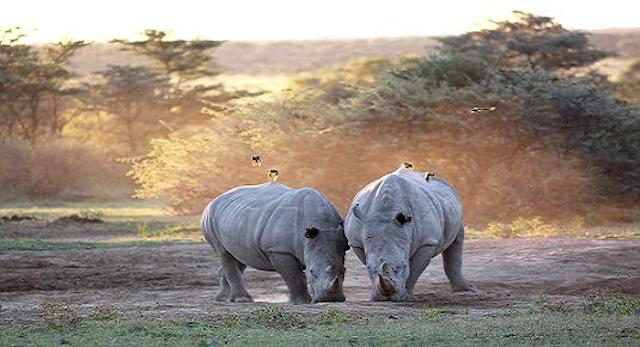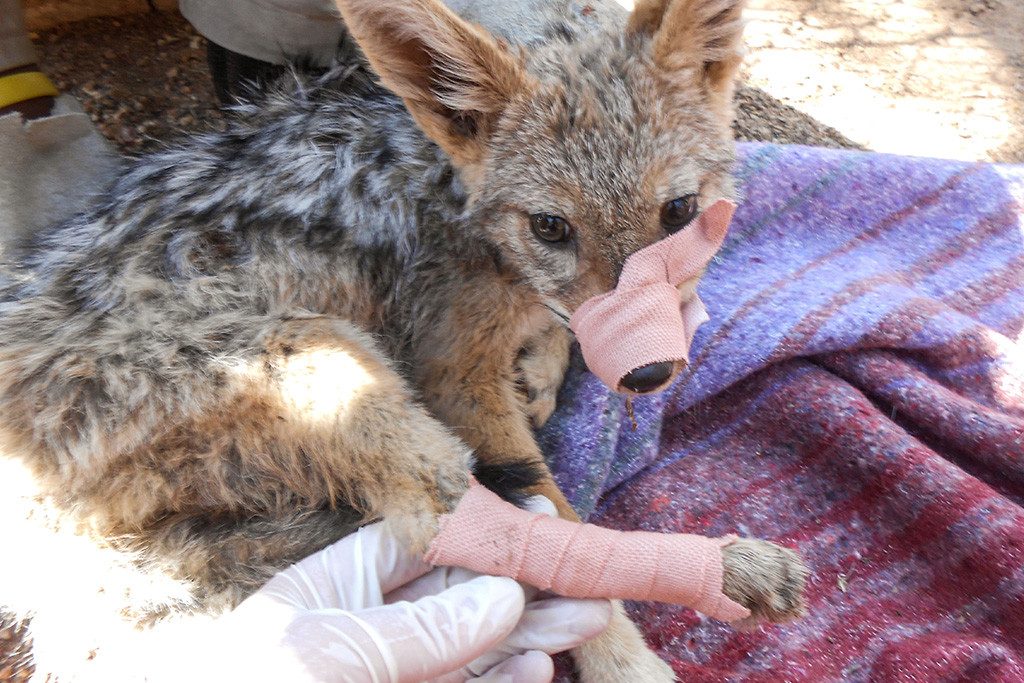Botswana is a haven for wildlife enthusiasts, drawing visitors from around the world to see animals in their natural habitat. But due to over-hunting, deforestation, lack of food, and other things, many species are facing near extinction. And when you’re on a safari game drive, it’s a wonderful and exciting thing to see large mammals roaming freely in the wild. But the wildlife expedition doesn’t have to end there. You can continue your adventure by paying a visit to wildlife sanctuaries that are popping up all over Botswana. The sanctuaries allow tours in their facilities to educate the public on what they do to save the animals. Once you get there, you can see the behind the scenes processes of how the staff are working hard for the animal’s survival. Here are some fantastic wildlife sanctuaries you must visit in Botswana.

(Photo courtesy of Khama Rhino Sanctuary)
Khama Rhino Sanctuary
When people think of an endangered species in Africa, they often think of rhinos. The docile giants are rapidly declining, thanks to their horns being in high demand on the black market. Khama Rhino Sanctuary is a protective park where visitors can visit an enclosed portion of land to admire the free-roaming black and white rhinos. Guests can do a self-driving tour through the park, but we highly suggest joining a two-hour guided game drive led by a knowledgeable ranger who will tell you all about the park’s mission and efforts. Afterwards, guests are invited to the Education Center where children can partake in rhino-themed activity games to learn more about them. Guests can opt to stay overnight in the sanctuary’s designated campsite or rent one of the chalets available on the premises. The campsite has its own pool and dining hall for your convenience.

Courtesy of i_pinz/Flickr.com
Abu Camp
Nestled in the heart of the Okavango Delta, Abu Camp operates as a luxury accommodation but controls approximately 445,000 acres of the land, which they turned into a perfect sanctuary for elephants. The large mammals roam freely, but are under protective watch and guests are invited to meet the Abu herd of elephants. Guests will follow a guide to the herd and learn about conservation efforts. Some visitors are even invited to observe veterinary care or partake in mud bathing with the elephants. Abu Camp also works hard to reintroduce elephants into the wild by rehabilitating them. Afterwards, many of them either decide to stay with the Abu Herd or leave on their own accord to explore other parts of the Okavango Delta. Visitors can stay overnight in its tented luxury camps for a grander stay. However, it’s advised to book the Star Bed Experience to sleep under the stars during good weather.

Courtesy of Nata Lodge
Nata Bird Sanctuary
Birds too, need help in their survival and that’s where Nata Bird Sanctuary comes in. Part of the Makgadikgadi Pan, the sanctuary is an oasis for over 250,000 lesser and greater flamingos along with other bird species. The sanctuary covers about 89 square miles of the pan including a portion of the Nata River where the birds reside. Today, avid birders come from around the world to the sanctuary to look for up to 165 species of birds including great white pelicans, spoonbills, African fish eagles, secretary birds, snake eagles and more. The area is protected and managed by the Kalahari Conservation Society.

Courtesy of mokolodi.com
Mokolodi
If you’re wondering where all the sick and injured animals are nursed back to health, Mokolodi is one of the few places that take them in before re-introducing them back into the wild. During your visit, you will see the behind the scenes process of caring for injured animals, including rhinos, cheetahs, birds and many more. Mokolodi is a game reserve with its own overnight accommodation for guests to have a fabulous upscale camping experience with easy access to game drives offered on the site as well as the nursing facility. Activities on its campsite includes night game drives, rhino tracking, giraffe tracking, a visit to a reptile park and more.
More from AFKTravel:
The Best Horseback Riding Safaris In Botswana
Why You Need To Visit Kubu Island, Botswana
Biking In Botswana: An Alternative Safari
Want to discover the finer side of Africa? Sign up for our weekly newsletter.

